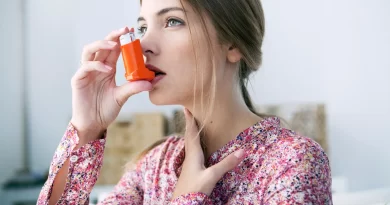3 symptoms of kidney stones
Kidney stones
How common are kidney stones?
What is a kidney stone?
Causes of kidney stones
Types of kidney stones
Symptoms of kidney stones
Treatment of kidney stones
I think I have a stone. what shall I do?
Diagnosis of kidney stones
Why do doctors check stone content?
Long-term outcomes of kidney stones
Reducing the risk of kidney stones
children are get kidney stonesHow kidney stones are same?
Each year, more than half a million people visit emergency rooms for kidney stone problems. It is estimated that one in ten people will develop a kidney stone at some point in their life. The prevalence of kidney stones was 10% during 2013-2014.The risk of kidney stones is about 11% in male and 9% in female. Other diseases such as high blood pressure, diabetes and obesity can increase the risk of kidney stones.
What is a kidney stone?
A kidney stone is a hard substance formed from chemicals in the urine.There are four types of kidney stones: calcium oxalate, uric acid, struvite and cystine. Kidney stones can be treated with shock wave lithotripsy, uteroscopy, percutaneous nephrolithotomy or nephrolithotripsy. Common symptoms include severe lower back pain, blood in your urine, nausea, vomiting, fever and chills, or urine that smells or looks cloudy.
Different wastes are dissolved in urine.When there is too much waste crystals begin to form. The crystals attract other elements and bind together to form a solid that will continue to grow until it is passed out of the body in the urine. Normally, these chemicals are excreted in the urine by the body’s expert chemist: the kidneys. In most people, getting enough fluids washes them away or other chemicals in the urine prevent stones from forming.The chemicals for stone formation are calcium, oxalate, urate, cystine, xanthine and phosphate.
After it forms, the stone can remain in the kidney or move down the urethra into the ureter. Sometimes, small stones pass out of the body in the urine without much pain. But stones that don’t move can cause urine to back up in the kidney, ureter, bladder, or urethra. (symptoms of kidney stones)
Causes of kidney stones.
Possible causes include drinking too little water, exercise (too much or too little), obesity, weight loss surgery, or eating foods with too much salt or sugar. Fructose is found in table sugar and high fructose corn syrup.Types of Kidney Stones There are four main types of kidney stones: Calcium Oxalate: The most common type of kidney stone that forms when calcium oxalate mixes with urine. Inadequate calcium and fluid intake, as well as other conditions, can contribute to their formation.Uric Acid: This is another common deseases of kidney. Foods like organ meats and shellfish are high in natural chemical compounds called purines. The formation of these types of stones runs in families.
Struvite: This stone is less common and is caused by an infection in the upper urinary tract.
Cystine: These stones are rare and run in families. What are cystine stones?
Symptoms of kidney stones.
Some kidney stones are as small as a grain of sand.Others are as big as a rock. A few are as big as a golf ball! As a general rule, the larger the stone, the more noticeable the symptoms.
Symptoms may include one or more of the following:
Severe pain on both sides of your back
More vague pain or abdominal pain that does not go away.
Blood in the urine,
Nausea or vomiting
Fever and chills.
Urine that smells or looks cloudy.
Kidney stones become painful when they become irritated or obstructed. It quickly builds into extreme pain. In most cases, kidney stones pass without harm—but usually not without a lot of pain. Small stones may require only pain-relieving treatment. Other treatments may be needed, especially for stones that cause lasting symptoms or other complications. However, severe cases may require surgery.
Treatment of kidney stones.
Treatment of kidney stones is the same in children and adults.You may be asked to drink plenty of water. Doctors try to pass the stone without surgery. You may also receive medications to help reduce the acidity in your urine. But if it is too large, or if it blocks the flow of urine, or if there are signs of infection, it is removed surgically.
Shockwave lithotripsy is a non-invasive procedure that uses high-energy sound waves to break stones into pieces that are then easily passed out in the urine. In ureteroscopy, an endoscope is inserted through the ureter to retrieve or remove the stone
goes Rarely, for very large or complex stones, doctors will use percutaneous nephrolithotomy/nephrolithotripsy.
I think I have a stone. what shall I do? Do I have a UTI or kidney stone?
first of all See a doctor as possible. You may be asked to drink extra fluids to try to pass the stone in the urine. If you strain your urine and can pass a piece of stone, bring it to your doctor. Or, the stone may need to be surgically removed.
Diagnosis of kidney stones.
Diagnosis of kidney stones begins with a medical history, physical examination, and imaging tests. Your doctor will want to know the exact size and shape of the kidney stone. This can be done with a high-resolution CT scan from the kidney to the bladder or an X-ray called a “KUB x-ray” (kidney-ureter-bladder x-ray) which will show the size of the stone and its position. KUB X-rays are often obtained by surgeons to determine whether a stone is amenable to shock wave therapy. A KUB test can be used to monitor your stones before and after treatment, but a CT scan is usually preferred for diagnosis. So, In some people, doctors also order an intravenous pyelogram or lVP, a special type of x-ray of the urinary system that is taken after the dye is injected.
Second, your doctor will decide how to treat your gallstones. Your kidney health will be assessed with blood tests and urine tests. Next, the doctor will want to find the cause of the stone. After the stone is out of your body, the stone will be analyzed, and your doctor will check your blood for calcium, phosphorus, and uric acid. The doctor may also ask you to collect your urine for 24 hours to test for calcium and uric acid.
Why do doctors check stone content? Studying gallstones can help you understand why you have them and how to reduce your risk of getting more stones. The most common type of stone is composed of calcium.Calcium is an integral part of a healthy diet. The kidneys normally remove excess calcium that the body does not need. Most people with gallstones have too much calcium. So It combines with waste products such as calcium oxalate to form stones.
Less common types of stones are: infection-related stones, which contain magnesium and ammonia, called struvite stones, and stones made of monosodium urate crystals, called uric acid stones, which may be related to obesity and dietary factors are A rare type of stone is a cvstine stone that runs in families.
Long-term outcomes of kidney stones. How do you know when kidney stone is starting?
If you have one stone, you are at increased risk of developing another stone. People who develop one stone have about a 50 percent risk of developing another stone within 5 to 7 years.
Reducing the risk of kidney stones.
Drinking plenty of fluids will help keep your urine less concentrated with waste products. Darker urine is more concentrated, so your urine should look very pale yellow to be clear if you are well hydrated. Most of the fluids you drink should be water. Most people should drink no more than 12 glasses of water a day. Talk to a healthcare professional about the right amount of water that is best for you. If you exercise or it’s hot outside, you should drink more. Sugar and high fructose corn syrup should be limited to small amounts.
Eat more fruits and vegetables, which reduce acidity in the urine. When urine is less acidic, stones can form less. Animal protein produces urine that is more acidic, which can then increase your risk of kidney stones.
You can reduce the added salt in your diet. Which foods are high in salt? So, everyone thinks of salty potato chips and french fries. They should be eaten rarely. There are other products that are salty: sandwich meats, canned soups, packaged foods, and even sports drinks. (symptoms of kidney stones)
If you are overweight, you may want to try to get to a normal weight. But, high-protein weight-loss diets that include high amounts of animal-based protein, as well as crash diets, can increase the risk of stone formation. You need enough protein, but it should be part of a balanced diet. Seek guidance from a registered dietitian when starting a weight loss diet or any dietary intervention to reduce the risk of kidney stones. Don’t be confused to have a “lime” stone. But, Dairy products contain calcium, but they actually help prevent stones, because calcium binds to oxalate before it enters the kidneys. (symptoms of kidney stones)




